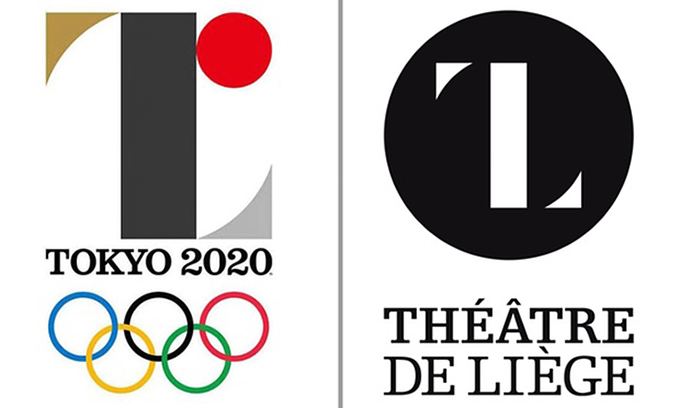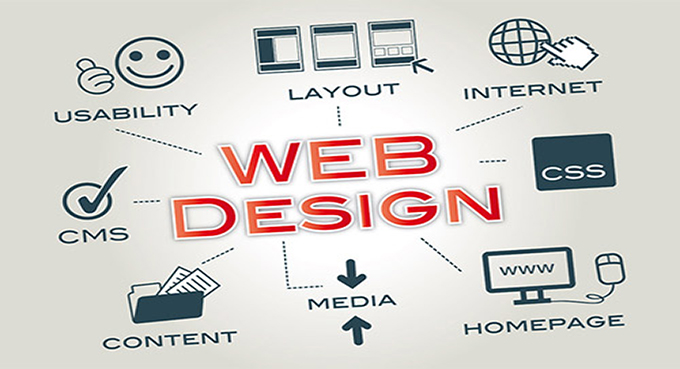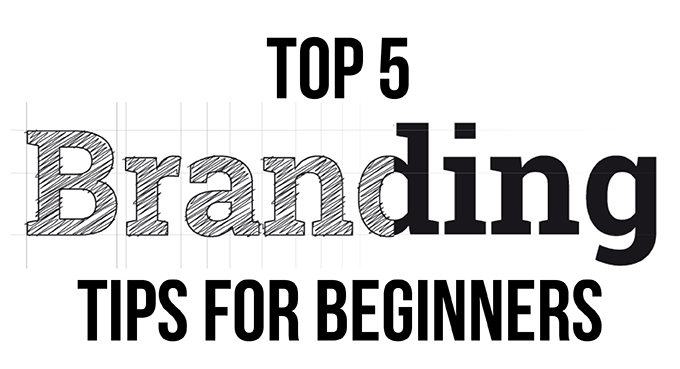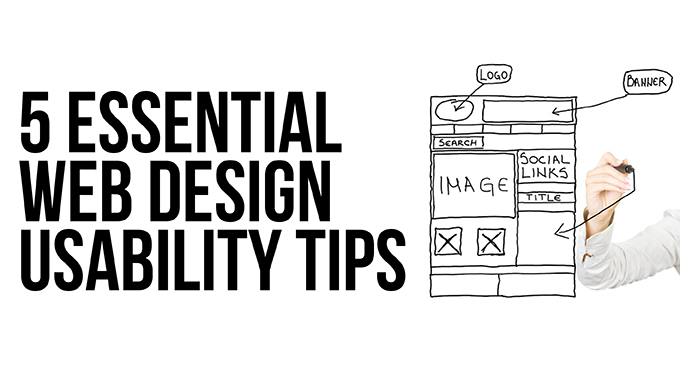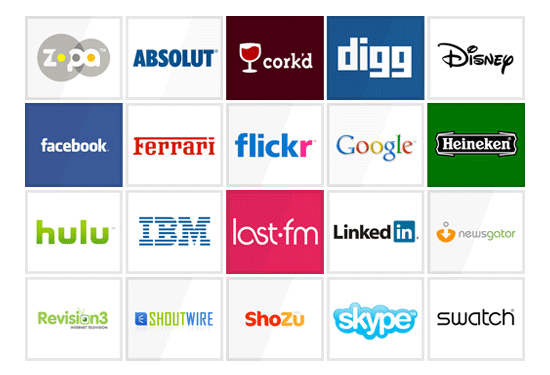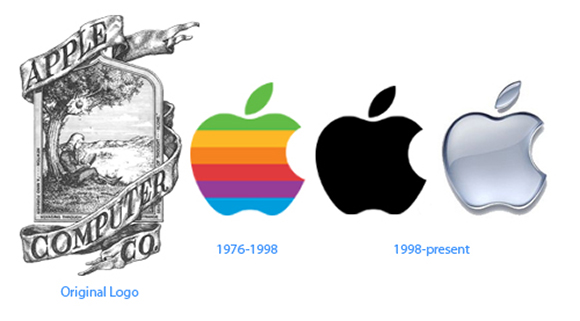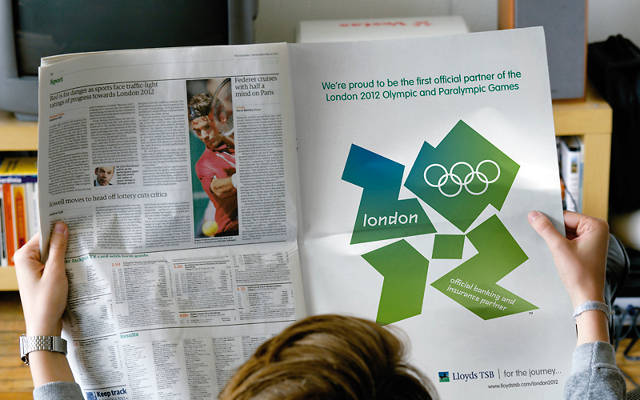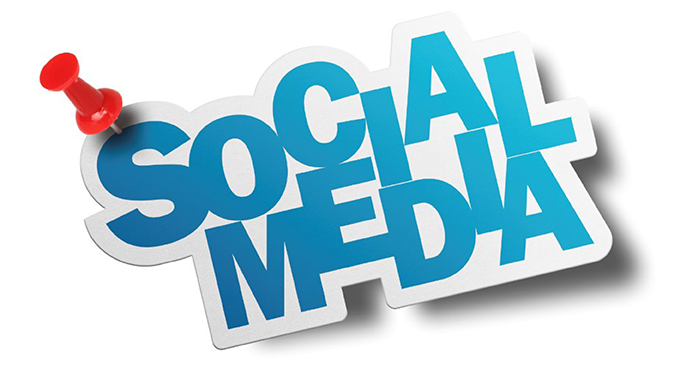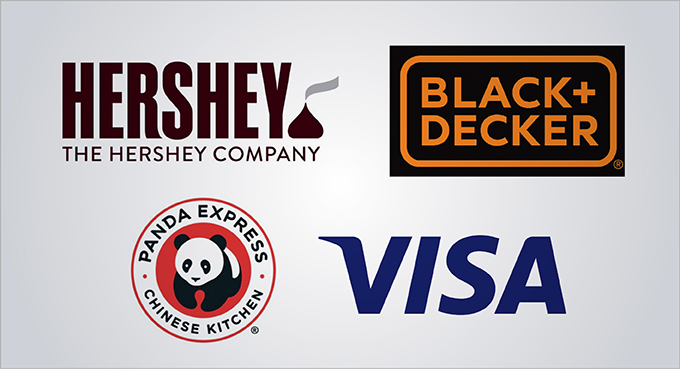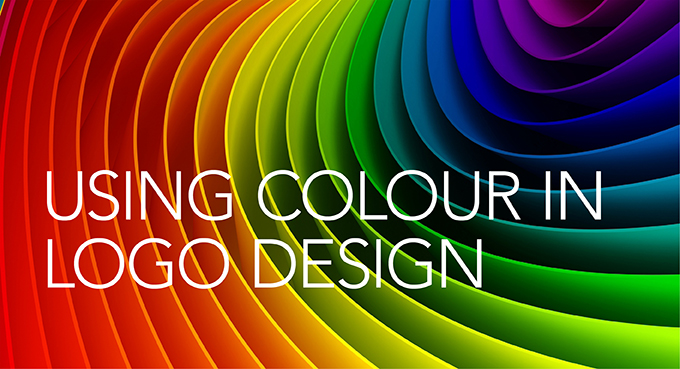Tokyo 2020 Launches Competition To Design New Logo
16th February 2018BrandingEnjoy,Tech,Travel
Poor old Japan. They really can’t seem to get the hang of this Olympics organisation malarkey. A year behind construction schedules and facing all kinds of budgetary problems, the country were left facing yet another setback in their preparation campaign back in September as the official logo for Tokyo 2020 was placed under scrutiny. It’s a far cry from the glory days of 1964, with that year’s Tokyo Olympics represented by a simple, red, rising sun above five golden rings. That logo was designed by Yusaku Kamekura, and it was so simple (and yet effective) that you could almost argue it was un-copyrightable anyway.
Copyright Problems
If you’re halfway interested in design, there’s no doubt you will have heard all about the controversy that left the Olympics officials red-faced a couple of months ago. Kenjiro Sano’s logo creation for Tokyo 2020 was accused of infringing image copyright laws by a wide variety of prominent individuals in the design world, and Japan finally came to the conclusion that they needed to scrap the design and start afresh.
Clear Similarities
Olivier Debie was the main voice of opposition to the logo, with the Belgian designer claiming that it strongly resembled his design for the Theatre De Liege – a playhouse in his home country. A glance at both logos side by side reveals that he may have a legitimate grievance. Both designs incorporate the use of two right-angle triangles with a slightly curved longer side, with a rectangle sandwiched in between them. The main difference between the logos is the splash of gold and silver added by Sano, along with the red circle in the top right hand corner which is used to reflect the nation’s flag.
A Rethink From Japan
Now Japan are turning to the public in an attempt to find a logo that will provide their Olympics organisation with some much-needed spark and a complete rejuvenation. The competition was announced in late October, and anyone wishing to enter will have from the 24th of November until the 7th of December to submit their design for judging. A screening process will then commence, and the winner is all set to be announced at some point during the first quarter of 2016.
Must-Have Elements
Designers are free to enter the competition with whatever ideas spring to mind, although the panel of judges will be looking to ensure that the creations meet a certain criteria. All logos must integrate the concept of world peace in some way, as well as the notion of “being the best you can be”. Furthermore, some sort of symbol that reflects the nation of Japan (or its capital city Tokyo) is, as you might expect, a necessity. Other elements that designers are encouraged to include are the themes of inclusivity, innovation and regeneration.
The Big Prize
Anyone entering the competition must be over 18 years of age. The winning designer will be awarded with an invitation to attend the opening Olympic ceremonies completely free of charge, and will also have their name splashed all over the world as the designer of the official Tokyo 2020 Olympics logo.
Five Simple Tips For A Successful Website
4th January 2018Web DesignEnjoy,Tech,Travel,Print
How do your customers find you? Chances are, their first port of call will be your website. This gives you the perfect opportunity to connect with your customers by designing a website they will enjoy. Here are five simple tips to help you on your way.
1. Make it Central to your Branding Strategy
Take a look at these two sites: Vogue and TeenVogue. You’ll see immediately that they have been branded differently to appeal to two distinct groups of customer. It’s important to design your site to attract your target audience, but there are a few basic principles to follow when it comes to the overall organisation and appearance of your website.
Start with your logo: It should be given a prominent position and appear in the same header spot on all your pages. A high resolution image that links to your homepage will help customers get to know your logo and easily navigate your site.
Next, pay attention to the colour scheme and font choice as these will set the tone and character of your website. Consistency is the key. Customers will get to know you through your branding, so once you have a found a style that works, make sure you stick to it for all your web pages.
2. Include the Essentials
This is a really simple thing to get right, but it is so often overlooked. Compile a list all the things you want your customers to find easily from your website: for example your contact details, opening times and how to place an order. Ask around your employees and customers to find out what they think – you might be surprised by what they consider to be must-haves on your site. Make your navigation and links prominent and intuitive. If visitors to your website feel at ease and in control, you can be confident that your website is working for you to establish customer trust and brand loyalty.
3. Use Quality Content
Just as blinking images and visual overload can make users click away, so too can being faced with a solid wall of badly organised text. Focus on the information that you want your target audience to absorb and consider how the text appears on the screen – is it visually inviting? Adding fresh content to your site can be a great way to keep visitors returning, but make sure you keep eye-strain to a minimum.
4. Cut out the Clutter
Bells and whistles are out, sleek elegance and simplicity is in. The demise of Adobe Flash, aided along by the Occupy Flash movement, has helped turn the tide against excessive visual bling. So, give your content breathing space, and keep to a standard layout.
and finally…
5. Make it Responsive
This tip might seem not-so-simple, but the ever accelerating trend towards mobile technology means that your website must seamlessly adapt to any device and any screen size. The way forward is to build your site using Responsive Web Design (RWD). If you feel that building your own site is beyond your capability, get help from the experts: Invest in a professional web designer.
Branding Tips For Beginners
16th March 2017BrandingEnjoy,Tech,Travel,Print
Branding Tips For Beginners
Ever heard of BackRub? Established in 1996 as a cutting edge search engine, BackRub checked the number of back-links to a website in order to rank its importance. This preliminary brand name, along with its alarmingly literal BackRub logo, didn’t last long. In one of the most inspired branding revamps of all time, the founders of BackRub changed the name to Google, and the rest is history.
Establishing your Brand
The concept of branding may sound like an airy fairy notion, far removed from the nuts and bolts reality of running a small business – all well and good for big players with big marketing budgets, but way down the list of priorities for a small firm with a million and one more pressing demands. So, why care about branding?
Branding is Reputation
You might not realise it, but your business already has a brand. Branding is reputation. If you consider your reputation to be important, and if you have put time and effort into building up your business reputation, then branding matters to you. It is through branding that you will secure customer trust and loyalty and attract new customers to grow your business.
It’s worth taking the time to focus on your business by putting together a brand plan. Involve your staff – brainstorm ideas, encourage creativity, make it fun so everyone they feels included and valued.
First Impressions
It may be an old cliche, but first impressions really do count. Think about the routes by which potential customers find you – it could be that they walk in off the street or look you up in Yellow Pages, but it’s more likely these days that they’ll find you via your website or even an external website such as Trip Advisor. Make sure you understand all the ways customers get to know about your business – their first experience is all part and parcel of your brand image.
What Makes You So Special?
Distinctive branding will set your business apart from the competition, strengthen your identity and encourage customer loyalty. Take a look at your logo. Customers will get to know you through your logo, so make sure it is unique, attractive and professional. Do you have a tag line? A snappy one-liner that sums up the essence of your business can give your brand focus even if you decide not to use it in the end.
Define your company values. Core values that chime with those of your customers will help establish an emotional connection to your brand. Encourage feedback from your customers and promote the values that you know you have in common. Establishing a connection and building up trust will generate repeat custom and bring in new customers through word of mouth.
Be True to Your Brand
Finally, keep your branding consistent. Once your brand is established and you know it is working well, don’t be tempted to chop and change. Successful branding takes time to develop, so stay true to your brand, give it chance to grow and it is certain to help you deliver the goods.
Five Essential Web Design Usability Tips
16th March 2017Web DesignEnjoy,Tech,Travel,Print
Web Usability is a clunky phrase meaning ‘ease of use’ of a website. Get it right and your website will encourage brand loyalty and trust by giving visitors an experience that makes them feel smart and in control. Get it wrong and that trust will evaporate as they struggle with a frustrating website that brings on feelings of incompetence. Here are five usability tips to consider.
1. Build in Usability From the Start
Imagine you are one of your own customers visiting the website for the first time. What are you looking for? It might be something very straightforward like the opening times of your shop or a contact phone number, or it might be something more involved such as placing an online order. Draw up a check-list of the information you want your customers to access quickly and easily from your website. Usability starts with understanding your target audience – always bear them in mind while designing your website.
2. Surface Simplicity
Straightforward links and clear pathways to key content on your website will enable the visitor to feel in control. Don’t try to be clever – follow the accepted conventions, such as using blue for text links – if your visitors become lost and disorientated, they won’t stick around. As luck would have it, the vast majority of visitors to your website will already be adept at tracking down the information they need. Eye tracking studies show that users browse content in seconds, scanning the site for useful links to click. The downside of this predictable search pattern is that the slightest hitch or frustration could well push potential customers into clicking away from your website.
3. Mobile Optimisation
With the introduction of Google’s mobile friendly search tags, optimising your website for smartphones and tablets has become a no-brainer. Bear in mind that mobile devices rely on touch-targets rather than mouse clicks. Small, tightly packed touch-targets are the cause of accidental clicks and can be hugely irritating. Large, well spaced targets will make life easier for your customers. Try Google’s quick and easy Mobile Friendly Test to find out if your website makes the grade.
4. Cut Out the Curses
We’ve all been there: Swarms of blinking images, links that look promising but take you on a wild goose chase, unreadable text against a funky background, annoying pop-ups… all guaranteed to raise the hackles and drive customers away. And if you think all that razzmatazz is a sure-fire way of grabbing attention, think again. Regular internet users quickly develop banner blindness, a skill that helps them filter out the noise from visual clutter and enables them to focus on what is important.
5. Test Early, Test Often.
Finally, make sure you test your site on different devices and different browsers – it may all work fine on your machine, but that doesn’t mean it will work for everyone. Getting valuable feedback from potential customers will give you a chance to put things right, so it is important to start testing early in the development stage and at regular intervals right through to launch.
What Your Font Says About You
16th March 2017BrandingEnjoy,Tech,Travel,Print
Meet Cracked Johnnie. He’s a bit of an animal, wild and anarchic. And here’s Moonbeam, soft and gentle with a hint of quiet sophistication. Then there’s Little Lord Fontleroy, fancy and high falutin’ just as you’d expect.
The Fonts You Choose are like the Company You Keep.
Fonts really are like people, they each have their own individual style and spirit. So, Cracked Johnnie would go down a storm at your upcoming mad bash, but you probably wouldn’t want him around when you’re dining with your in-laws. Try leaving Little Lord Fontleroy at the local high school, and he’d be having his head flushed in the toilet during the very first break time.
There are more than 100,000 fonts to choose from – this gives you a massive amount of artistic freedom, but such a dizzying multitude can soon send you screwball. When it comes to selecting a particular font, it’s worth putting some thought into the impression you want to make on your target audience. For example, the professional networking site LinkedIn has based its logo on the very business-like, no nonsense font Myriad Bold, whereas the Twitter logo is based on the fun and friendly Pico Alphabet.
It might also help to think about fonts as belonging to different families. So for a nostalgic feel, you could choose a font from the Retro family; for an edgy mood, go for a Graffiti font, and if you want a combative flavour, try an Military font.
How Your Font Could be a Tattle-Tale
In the same way that some companies hire a graphologist to analyse handwriting to determine the personality and character traits of the writer, it is now likely that your choice of fonts will also come under scrutiny. Most word processing applications have a super safe go-to font such as Times New Roman or Arial, but what message are you giving if you stick with such a font? You may feel that it gives a dependable air of integrity, on the other hand it could give the impression that you are boring, stuffy and timid. Oh, and a word about Cambria, the post-2007 Microsoft go-to font. Stick with Cambria and you’re telling the world that you are oblivious to the whole concept of font selection and you are simply hostage to the default.
Cracked Johnnie on your CV will send a very definite message about you to your potential employer, just as a obituary in Comic Sans is not likely to go down well with the bereaved. There is a time and a place for unbridled creativity, you also need to know when it’s best to rein it in and tone things down.
Get to Know Your Fonts
With so many fonts out there, it’s no wonder that choice of font has become a whole art form in its own right. Try getting to know your fonts – test them out, see how they behave, give them space to play, be adventurous. Go on, have a blast!
5 Vital Logo Design Tips
16th March 2017BrandingEnjoy,Tech,Travel,Print
Your logo matters, it is the face of your brand. Designing a logo that has impact and delivers the right message is a creative process requiring both technical knowledge and an artistic touch. Here are five design pointers for you to chew over.
1. Preparation
The first step in its development is to do the groundwork. Consider your target audience – what type of people do you need to attract? Whether they are tech-savvy teenagers or steam-age pensioners, high-flying professionals or first time mums you’ll need to bear them in mind when developing your logo. Aim your design at the right audience and it will inspire trust and loyalty to your brand. Get it wrong and your logo will flop.
2. Choose colours and fonts wisely
Different colours manipulate our emotions in different ways and can strongly influence how we feel about a brand. Compare the busy, vibrant colours of the London 2012 logo with the cool blue and white simplicity of technology giant HP. The same goes for the choice of font – different styles of font are carefully crafted to give very different messages. Be aware thatyour logo needs to both draw in customers and convey the right message about your brand. The combination of options is staggering, but in skilful hands the correct choice of colours and font can be used very effectively to appeal to your customers.
3. Dare to be distinctive – Make that logo your own
You want your logo to speak for your business, to be recognised and stand out from the competition. You might think it best to keep things simple, but play it too safe and you will end up with a logo that is uninspired, unmemorable and unloved. It takes a designer with experience, technical ability and creative flair to craft a unique, distinctive look that will engage your customers and keep them coming back.
4. Make it flexible
Think about how your logo will be used – on promotional material such as flyers and leaflets, on websites and social media… it may even need to be giant size for posters and billboards. If your logo will be viewed mainly at phones and tablets, it’s worth checking it out on a small screen. Your design might have to look good scaled from tiny to humongous and this will need to be thoroughly tested at the design stage – get it wrong and it could be back to the drawing board.
5. Test it out
Once you have developed your prototype logo, it’s really important to run it by different people and gauge their reaction. Something that looks good to you might be very different to the eyes of your target audience. Any useful feedback you receive can then be incorporated into the design – far better than being stuck with an unsuitable logo or having to scrap the whole thing and start over.
Your logo is an vital part of your brand identity. Get the design right and it will go straight to work, providing loyal and trusty service for you and your business.
Seven Of The Worst Logo Designs
16th March 2017BrandingEnjoy,Tech,Travel,Print
It can all go so horribly wrong. From the merely banal or baffling to the humongous bloopers; pitfalls abound. Some mistakes are easily made and easy to put right at the design stage. Others… well, let’s just say you have to really go the extra mile to blow it that badly.
Logo no-no’s
And so here is a choice selection of logo no-no’s for you to consider. Not all mistakes are glaringly obvious, and you might even find some of them to your liking, but that’s the colourful world logo design for you. Enjoy!
1. London 2012
Who can forget the vivid, pulsating in-your-face arrival of the London 2012 logo. From the moment it bounced sickeningly onto our screens and into our national psyche it came in for a good kicking. A headline in the Telegraph declared it ‘puerile’, even the Guardian snickered up its sleeve at the resemblance of Lisa Simpson giving a blow job. And when the Iranians threatened to pull out because they saw the word “Zion”, you’d think the designers would go quietly back to the drawing board. But love it or loathe it, the London 2012 logo stayed the course and has become one of the classic icons of recent years.
2. Kids Exchange
This one is rather unfortunate. It’s a good example of something that should have been picked up at the design stage. Running the words ‘Kids Exchange’ together like that was a serious error of judgement. Isn’t hindsight a wonderful thing?
3. Junior Jazz
Now this one takes a bit of imagination, but once you’ve noticed the naked female torso you can’t see it any other way. Given the nature of the organisation, it’s very unlikely that the illusion is deliberate. Oops!
4. Anthony Byrne
Another dubious symbol that someone should have spotted during the prototype stage. Maybe someone did see it but decided to keep schtum. It’s a bit of a balls up in any case.
5. The misplaced apostrophe
We all know what happens when an apostrophe is set out of place – it can make a huge difference to a sentence and to the way we read words. Really you’d have thought that a company like Stella Artoiswould know better.
6. Too much information
Sometimes an appealing logo design can be ruined by the addition of too much text. This Martial Arts Centre has managed to cram the full name of the business and list its services all in one little logo. Is that really a good idea? Your message should be clear, concise and simple – not require your customers to turn their heads 380 degrees to read your logo.
7. Choose your font wisely
You think you’re saying one thing, but choose the wrong font and your message can take on a whole new meaning. This is what we mean when we say that your logo should be readable both when it’s small and when it’s blown up. See examples of all sizes to see how the text works or you’ll end up making a faux pas yourself, just like the Wig and Pen pub did.
Speaking of fonts, there is one particular font to be avoided at all costs. Take a look at these famous logos changed to Comic Sans. Eww!
So if you think that designing your own logo is a doddle, you’d better think again. The art of logo design requires a combination of technical skill and creative flair. You will want your logo to be memorable for all the right reasons so it’s worth taking the time and trouble to get it right. Invest in a professional designer with a track record in successful logo design to create a logo that will make you proud.
Putting Personality Into Your Business With Social Media
16th March 2017Social MediaEnjoy,Tech,Travel,Print
Are you a social media skeptic? Find yourself shuddering at the mere mention of Facebook or Twitter? You’re not alone. But whether you are a new start-up or a well established business, there is no escaping the fact that social media has become a vitally important tool for reaching customers. On the plus side, the mushrooming of social media sites means there is bound to be the right platform for you.
Here are five examples of how companies and organisations have found creative ways to promote themselves and connect with customers through social media.
1. Find the Right Platform
There are hundreds of social media sites out there, and each platform has its own personality and appeal. The top 15 most popular sites will give you some idea of what’s available, but you don’t have to stick to these. Take your time to research them and choose the ones that are likely to suit you and your business.
For example, the Natural History Museum, London has crafted its Pinterest site to develop a sense of community between visitors of all ages and backgrounds, encouraging them to explore and learn together.
2. Target Different Audiences
Video sharing networks are becoming increasingly popular, with sites such as Vine and Vimeo providing alternatives to YouTube. Vine and Vimeo are branded differently, and can be used to reach different target audiences, as you’ll see from the Marmite example. Marmite on Vine shows playful, six second looping clips of Marmite in various situations – such as one in which a menacing Marmite gang sees off a jar of Vegemite. The Marmite Channel on Vimeo has a more grown-up feel, encouraging customers to share their own videos of their Marmite experiences. Love it or hate it, the debate goes on.
3. Connect With Your Customers
WD40 is an iconic brand with a hugely popular and long running marketing campaign which challenges customers to find new uses for the oil in a spraycan – over 2000 suggestions have so far been put forward. The WD40 Pinterest page has given new energy to the campaign which looks set to run and run.
4. Hit the Right Tone
Audi on Google+ has made a lovely job of showcasing the Audi brand, and the platform encourages customers to interact and get them talking. You might think that you already know your customers and what they want, but social media is a two-way street providing you with a golden opportunity to learn so much more.
5.Encourage Lively Banter, but Watch out for Trolls
Trolls and baiters are a fact of life on social media, but learn to deal with them effectively and you could even turn the situation to your advantage. In 2012, angry O2 customers took to Twitter to vent their frustration about a service failure. The O2 Twitter team tackled the crisis head on, responding to even the most offensive tweets with robust humour and personality. But be warned! This high risk approach can easily backfire. Dealing with trolls requires a great deal of skill, experience and social media savvy: The general rule is Don’t Feed the Trolls.
Weaking Logos: Small Changes That Worked (And Some That Didn’t)
16th March 2017BrandingEnjoy,Tech,Travel,Print
Whenever a large corporation makes even the tiniest of tweaks to its logo, there’s one thing you can guarantee – it won’t go unnoticed. There is an army of eagle-eyed logo spotters out there, poised to pounce, scrutinise and pronounce judgement. Here are five logo changes and the reactions they have provoked from the logo watchers.
Agghh! Change it Back!
To mark its transition from American chocolate maker to global confectionery giant, Hershey’s announced with great fanfare the unveiling of a new logo. From printed material and websites to the design of offices and shops, this new “visual identity system” would be rolled out all the way. At first glance the changes to the logo aren’t all that earth shattering – “Hershey’s” shortened to “Hershey” and a modern flat-design makeover – but it is the updated Kisses emblem that really catches the eye. Stripped of its enticing silver wrapper and pared down to a simple, flat shape, the new symbol bears a striking resemblance to a certain unpleasant emoji. Verdict from logo watchers? Eww!
Small Change, Big Difference
Big news: Black and Decker has lost its nut. This iconic brand image, familiar to DIYers for nearly 100 years, has been dropped. Along with the nut, the robust ampersand has also gone, to be replaced by an awkward looking + sign. Each individual change might not seem much, but the overall effect is huge. Online reaction to the Black and Decker logo has not been kind – vanilla, generic, weak and cheap. Oh dear.
No Flocking the Bird
In 2012 the top brass at Twitter made an announcement: No longer did they see a place for text in their logo. Henceforth the bird alone would stand as the universal symbol of Twitter. In a game of spot the difference, logo watchers pinpointed the most significant change to the Twitter bird: Its punk hairdo had been given the chop. Along with the new bird came a string of ‘usage guidelines’, including ‘don’t flock the bird with other birds’ and ‘don’t anthropomorphize the bird’. This provoked the headline Twitter goes Trademark Crazy from New Statesman, who then immediately set out to break the rules by publishing a picture of the Twitter bird on a skateboard.
Panda Express
A familiar sight in the shopping malls and airport food courts of the United States, fast-food chain Panda Express recently gave its logo a little tweak. The distinctive panda symbol remains unchanged, but a softer font, toned-down red and the change of wording from ‘Gourmet Chinese Food’ to ‘Chinese Kitchen’ has given a friendlier feel to the overall logo. Thumbs up for Panda Express from the logo watchers.
and finally…
Visa
For over 55 years, Visa has enjoyed one of the most enduring and recognisable logos the world over. Throughout that time the font has remained constant and the colour scheme hardly altered, but every so often Visa refreshes the brand image with a slight shift in detail. The latest makeover sees Visa losing its yellow flick and turning a darker shade of blue with a subtle gradient. The verdict: Fine… but why?
Using Colours In Logo Design
16th March 2017BrandingEnjoy,Tech,Travel,Print
The psychology of colour in branding and logo design is a fascinating subject to explore. Colour can be used as a powerful tool to influence our thoughts and emotions at an unconscious level, so it’s little wonder that theory of colour provokes so much discussion and controversy. A cursory internet search reveals a rainbow of diagrams and infographics with advice such as: Red conveys power and passion, green is soothing, yellow is cheery – but is that all there is to it?
Take a look at how these famous brands have made the colours work in for them.
Cadbury’s Purple
The colour purple is associated with sophistication and luxury. Confectionery giant Cadbury has used its rich and distinctive shade of purple in its packaging for a hundred years. Cadbury’s purple, technically known as Pantone 2865c, became something of a cause celebre when Cadbury took to the law to register it as a colour trade mark. If allowed, this would protect the brand by preventing competitors within the same market sector from fooling customers with confusing lookalikes. In an epic ten year legal tug-of-war with Nestle, the two giants battled it out. Cadbury was eventually forced to concede defeat in 2014, but the fight for Pantone 2865c might yet reignite.
Subverting the Colour Pink
Most colour infographics will tell you that pink is a feminine colour which elicits feelings of softness and innocence. But in a stroke of branding genius, the Sex Pistols twisted the sweet nature of pink into an aggressive, in-your-face blast. Subverting pink in this way, and combining it with a fierce, primary yellow brings on an intense discordance that is every inch Sex Pistols.
The Colours of Fast Food
Check out the logos of many fast food chains and you’ll notice a common theme in the choice of colours: a combination of brilliant red and glowing yellow. It might seem obvious that these are exciting, attention grabbing colours, but it is also claimed that they can trigger appetite and encourage a sense of urgency. This not only gets customers in the mood for fast food fare, but it also makes them more likely to eat quickly. It goes right to the core of the fast food restaurant model – to get customers through the door and speedily satisfy their cravings so that customer throughput is kept to the max.
The No-Colour Logo that Grabs Attention
The expression ‘less is more’ is bandied about a lot in the world of logo design. Ogio wine has taken this principle to the extreme with its sleek, slate grey brand colour and perfectly circular hole taking the place of an image. With absolutely no distracting details or extraneous information, Ogio’s supercool branding makes the bottle stand out on the supermarket shelf, drawing the eye of customers away from its competitors. It really works!
It is clear that the effects if colour in branding and logo design can be complex and surprising. Get it right and the colours you choose will catch the eye, resonate with your target audience and convey deeper meaning about your brand.
